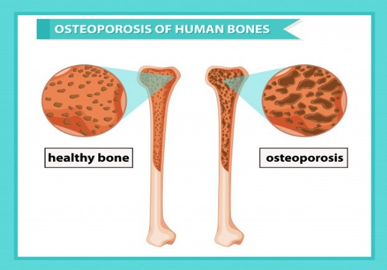Articles
Not Just Age, These 5 Other Osteoporosis Risk Factors

Bone loss or known as osteoporosis is a condition when bone mass density decreases. This not only makes bones porous, but also makes bones fragile and easily broken. Usually this happens because bone tissue is damaged faster than the production of new cells.
Conditions like this often attack over the age of 60 years, but the age above 40 years and especially menopause should be vigilant. This fact is reinforced by a number of studies which state that as many as 23% of women in Indonesia with an age range of 50-80 years experience osteoporosis.
Age is indeed a risk factor for triggering osteoporosis. However, this condition is actually also influenced by a number of other factors, as follows:
1. Gender
Women are four times more likely to suffer osteoporosis than men, especially women from Caucasian or Asian races. This is because the bone mass that women have is lower than that of men and Asian women’s body postures are relatively smaller so that they have lower bone mass compared to other races.
In women, low estrogen levels that usually occur due to menopause, ovarian removal surgery, and chemotherapy can make it harder for bones to form new tissues and structures
In men, low testosterone levels are a risk factor for bone loss.
3. Family History
If there is a family member who has a history of osteoporosis, then someone will be at greater risk for experiencing the condition.
4. Body Size
Women and men with small and thin body shapes are at higher risk for bone loss than women and men who have large body shapes.
5. Lack of vitamin D
Vitamin D works to help the body absorb enough calcium for bone health and strength. People who are deficient in vitamin D are prone to osteoporosis. Not the maximum body in absorbing calcium can also be caused by disruption of intestinal performance due to celiac disease and primary biliary cirrhosis.
If you have one or more of the above risk factors, immediately consult a doctor. Usually you are encouraged to do a physical examination, blood tests, and urine tests to determine the condition of the bones. Continue to exercise regularly and consume foods rich in vitamin D to maintain your bone density from an early age.
Download the article ‘Not Only Age, These 5 Other Osteoporosis Risk Factors’



